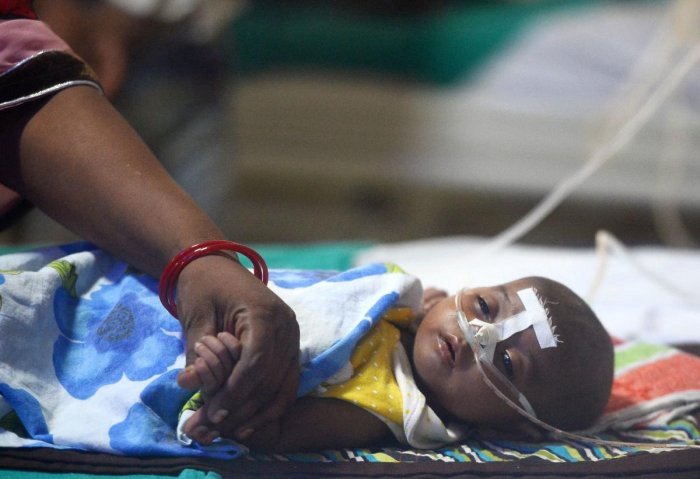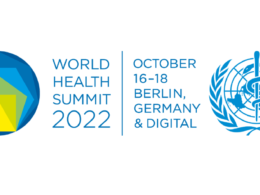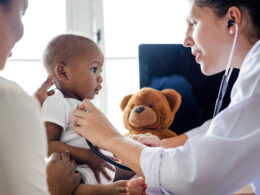Child Mortality: an everyday tragedy of enormous scale that we can make progress against
OurWorldinData
by Max Roser
July 21, 2021
Credit to the image: Decan Herald
Questions about life and death have to be at the heart of this web publication on the world’s largest problems. Whatever we might hope for, being alive and healthy is a prerequisite for all of it.
In a world that faces many large health problems, the very worst one to me is the death of children.
Child mortality refers to the death of children before their fifth birthday.1
We live in a world in which 5.4 million children die every year. That’s ten dead children every minute.2
Imagine what it means for a child to lose his or her life; imagine what it means for a family to see their child die. Ten families will experience that in the next minute. This will repeat every minute for the rest of the year. That is the horror of child mortality.
Child mortality is an everyday tragedy of enormous scale that rarely makes the headlines
These daily tragedies do not receive the attention they deserve. Comparing it with those tragedies that do receive public attention makes this clear. A large jumbo jet can carry up to 600 passengers.3 The number of child deaths is equivalent to a crash of a jumbo jet with only children on board, every hour of every day of the year.
A newspaper that would cover the most important events that happened in the last 24 hours would always cover the thousands of child deaths on its front page. The headline would be the same every day: ‘14,000 Children Died Yesterday’.
But newspapers tell us about the extraordinary events that happened in the last 24 hours, not the ordinary events that happen every, regardless of how tragic they might be. This means that one of the world’s largest problems is barely mentioned in public discussion and hardly noticed in the news media.
The daily cruelty of thousands of children dying remains largely unseen.
Global inequality: in countries where incomes are very high child mortality is low
The risk of death that a newborn faces differs enormously between different countries. This is what the scatter plot shows. It plots the risk of death on the vertical axis against the country’s average income on the horizontal axis.4
The inequality is extremely high. A child that is born into one of the poorest countries faces a one-in-ten chance to die within the first five years of her or his life. In rich countries the rate of survival is as high as 99.8%.
Across the world, high incomes are a necessary but not sufficient condition for good child health. The chart shows that all countries in which children have a good chance to survive are high-income countries.
The fact that economic inequality maps on to the inequality of child survival means that a child in a rich country has an advantage in both ways: she can expect to survive and will live in a society where incomes are more than 70-times higher than in the poorest countries.

It is possible to change the world
This inequality did not exist in the past. In pre-modern times mortality at young ages was extremely high, no matter where a child was born. In societies around the world around half of all children died before they reached the end of puberty. → Here is my post on child mortality in the past.
The history of child deaths shows that it is extremely difficult to keep children alive; a lot of things have to go right for a child to survive. That is why child mortality is such a good indicator of the living conditions in a society more broadly.
The global inequality we see today is the consequence of unequal progress. Even in today’s healthiest and wealthiest countries, the low child mortality rates are a very recent achievement: the chart shows the decline of child mortality in the country that has the lowest child mortality today. In the 19th century around a third of all children in Iceland died (a much higher rate than in today’s worst-off countries). Good child health is the consequence of the progress achieved in the country’s modern history.

We should not make the mistake to believe that it would be easy for all children to achieve the opportunities of children in Iceland. It is a difficult and slow process to achieve economic growth, and it is hard to improve the health of an entire population. But the fact that even the best-off countries struggled for millennia to keep children alive and improved the health of their children only in recent decades suggests that there is nothing that would prevent the same progress in those countries where children have the poorest health today.
It is also important to know that all countries — even today’s very worst off — have already achieved progress:
– The line chart below shows that the rate of child deaths has fallen in all world regions.
– The world map shows this history in even more detail. By default you see the reconstructions of child mortality for countries around the world back in 1800. If you press the ‘play’-button in the bottom left-hand corner you see how mortality has changed since then. Child mortality declined in every country in the world. Most rapid was this progress in recent decades.
Improvements in nutrition, access to vaccines, sanitation, healthcare and midwives, better housing and increasing prosperity, better education (especially of mothers) and many other positive developments have all made a difference in reducing the mortality rate of children.
Both visualizations make two points clear: the world has made a lot of progress, yet child mortality is still unacceptably common today.


As I’ve written before, it is true that all three statements are true at the same time: The world is much better, the world is awful, the world can be much better.
Yet, from reading the news you wouldn’t know any of this. The news does not report on the ongoing daily tragedy of child mortality, nor on the fact that we live in the period in global history in which humanity is achieving the most rapid progress.
Looking into the future it is clear that we need to — and can — do much more. We are still in the very early stages of progress, even against the very worst global problems. The history of the last two centuries makes clear that we don’t have to accept the world as it is.
We don’t have to accept a world in which 10 children die every minute. The research and data make clear that our generation has the possibility to achieve a world in which children everywhere can live a healthy life, no matter where in the world they are born.
By donating some of your money to an effective charity you can contribute to this historical progress against poor child health.
If you want to help then your decision of where to give matters a lot.
If you choose poorly you won’t help anyone (or even make things worse). If you choose well you can make a real difference.
The researchers at GiveWell do the important work of identifying the charities where your donation can make the biggest positive difference to the world.
I trust their expertise. You find their recommended charities here: givewell.org/charities/top-charities
About the author
Dr. Max Roser
Founder and Director
Max is the founder and director of Our World in Data.
He began the project in 2011 and for several years was the sole author, until receiving funding for the formation of a team.
Max’s research focuses on poverty, global health, and the distribution of incomes.
He is also Programme Director of the Oxford Martin Programme on Global Development at the University of Oxford, and Co-executive Director of Global Change Data Lab, the non-profit organization that publishes and maintains the website and the data tools that make our work possible.
Acknowledgements: I would like to thank Hannah Ritchie for reading drafts of this text and for her helpful comments and ideas.
Originally published at https://ourworldindata.org.












